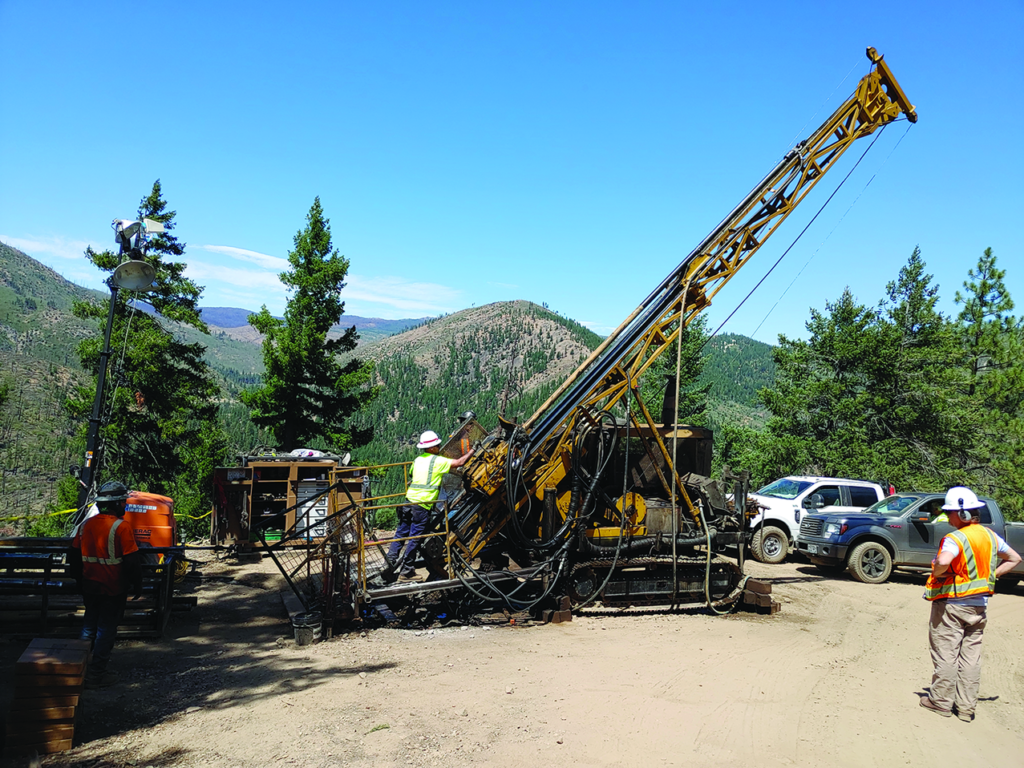JV Article: US Copper aims to develop Moonlight-Superior in California into a major new source of copper


Copper is pivotal to the global transition to a clean energy future. The red metal is an essential ingredient for the electric vehicles (EVs), energy storage systems, and renewable energy technologies underpinning this transition.
However, declining ore quality, mine closures, and the absence of additional investment in new supply could lead to a shortfall of 16 million tonnes by 2040, according to global research and consultancy firm Wood Mackenzie.
The challenge is to find new supplies of copper to support the electrification of transportation systems and energy networks, particularly for the U.S., which is currently a net importer of copper.
“The world will need a lot more copper to support the move away from fossil fuels – and we are developing a potentially significant new resource,” says Steve Dunn, president and CEO of US Copper (TSXV: USCU; US-OTC: USCUF).
The company is focused on advancing its Moonlight-Superior copper project to the production stage and “could be a major new source of copper to help meet the rising demand from the green technologies sector and the infrastructure needed to support it.”
The 34-km2 property lies within the Lights Creek copper district of Plumas County in northeast California, approximately 140 km northwest of Reno, Nev. The project hosts two past-producing underground mines, Superior and Engels, which produced over 161 million pounds of copper at a grade of 2.2% between 1915 and 1930.
Moonlight-Superior “has had over 500 holes drilled on it, with past operators spending around US$50 million in today’s money on the property,” says Dunn. “A historical resource estimate by the previous owner, Placer Amex, estimated a 4-billion-lb copper resource for the project, but we definitely have a lot more than that.”
The property, he adds, also benefits greatly from existing infrastructure. “It can be accessed year-round by a paved road, which also connects it with State Highway 89, about 11 km to the southwest, a power line runs 3 km to the south, and a rail line, 11 km to the southwest, connecting the project to a deep water port at Sacramento, about 240 km southwest. We also have a skilled workforce close at hand.”
Copper mineralization at Moonlight-Superior comprises sulphide and oxide resources hosted in three advanced-stage deposits – Moonlight, Superior and Engels – and several partially tested and untested exploration targets.
A 2017 mineral resource estimate for the Moonlight deposit estimated 228 million indicated tonnes grading 0.25% copper for 576,696 tonnes contained copper and inferred resources of 99 million tonnes grading 0.24% copper for 242,218 tonnes of copper.
According to Dunn, the estimate was based on drill results from a drilling campaign “that was still intersecting mineralization at the bottom of the deposit when the drilling was stopped, suggesting there is more ore beneath the current Moonlight resource.”
A preliminary economic assessment (PEA) for Moonlight in 2018 envisaged a mining operation with a 17-year mine life producing an average of 147,871 tonnes (326 million lb.) of copper concentrate per year for a life-of-mine production of 1.5 billion lb. of copper.
The early-stage study pegged initial capital costs at US$513 million, with US$71 million budgeted for contingency. Using an 8% discount rate and copper price of US$3.15 per lb., the after-tax net present value is estimated at US$237 million with an after-tax internal rate of return of 16.4%. The capital outlay would be paid back in 4.8 years.
The PEA “did not factor in the two other smaller, but higher grade deposits, Superior and Engels, which have similar mineralization to Moonlight, or numerous untested copper occurrences across the property,” says George Cole, a non-executive director with US Copper. Cole was previously vice-president of exploration of Cominco American until he retired in 2001.
“Further exploration success at Moonlight and inclusion of the other deposits and untested mineral showings, could significantly enhance the size and economics of the project.”
In addition, the oxide resources at Moonlight, he notes, were treated as waste material in the PEA, with Placer Amex estimating a historic resource of 11.1 million tonnes of copper grading 0.54% for the project’s oxide cap.
Cole says delineating an oxide resource for inclusion in the mine development plan “is also likely to boost the value of the project.”
This year, US Copper plans to drill about 3,000 metres at the Engels deposit. The drilling will target an approximate 240 metres by 120 metres by 213 metres envelope of open pit grade copper mineralization surrounding the historic underground Engels mine.
The mineralization was initially identified in underground drill holes during the 1915-30 mining operation, but was “too low-grade for an underground mine,” says Cole. However, he noted that more recent historical surface drilling encountered significant intervals of copper sulphide mineralization “that could be amenable to an open pit mining operation.”
According to Dunn, the company currently has around $2 million in the treasury and “will be more than enough to fund the proposed drill program, which we expect to start in the fall of this year.”
The preceding Joint Venture Article is PROMOTED CONTENT sponsored by US COPPER and produced in co-operation with The Northern Miner. Visit www.uscoppercorp.com for more information.
Comments